Every first-time visitor to Tokyo has one moment, just when they think they’ve tackled the madness of it all, when they are left frozen to the spot, blinking like a freshly caught guppy in the flashing neon lights. This occurred on our recent trip to the Japanese capital after I left my phone on the doily-draped back seat of a taxi. After finding refuge in a smoky bar in the basement of an office building near Shibuya, I ventured out alone to find an ATM. I lost myself trying to find a machine that would take my card, drifting further and further away from the bar. I suddenly found myself at the famous Shibuya crossing, swept along in a furious wave of humans as they crossed from one side of the street to another. I craned my neck to check which direction I was facing, but couldn’t tell one 500-meter-tall anime character or blinking games arcade from another. The air was warm, and the only hint of nighttime was in the narrow tears of black sky above the skyscrapers.
I eventually found my way back to the bar. But Tokyo is a lot like that. You think you’ve grasped it, and then it hands you a giant reminder that you never will. It is a mind game, a sensory shower, a magnificent maze of colors, smells and sounds. More than that, it is a city that mixes mind-boggling technology (robots, talking toilets, vending machines full of ramen) and boundary-smashing style (neon goths, adult school girls, a man in a gold lamé bodysuit and a sponge cake hat dragging a fleet of bristle tortoises behind him). Thrown on top of that is a devotion to fine materials, art and food, with a catalogue of life-enhancing cultural practices from chopstick decorum to hour-long tea ceremonies.
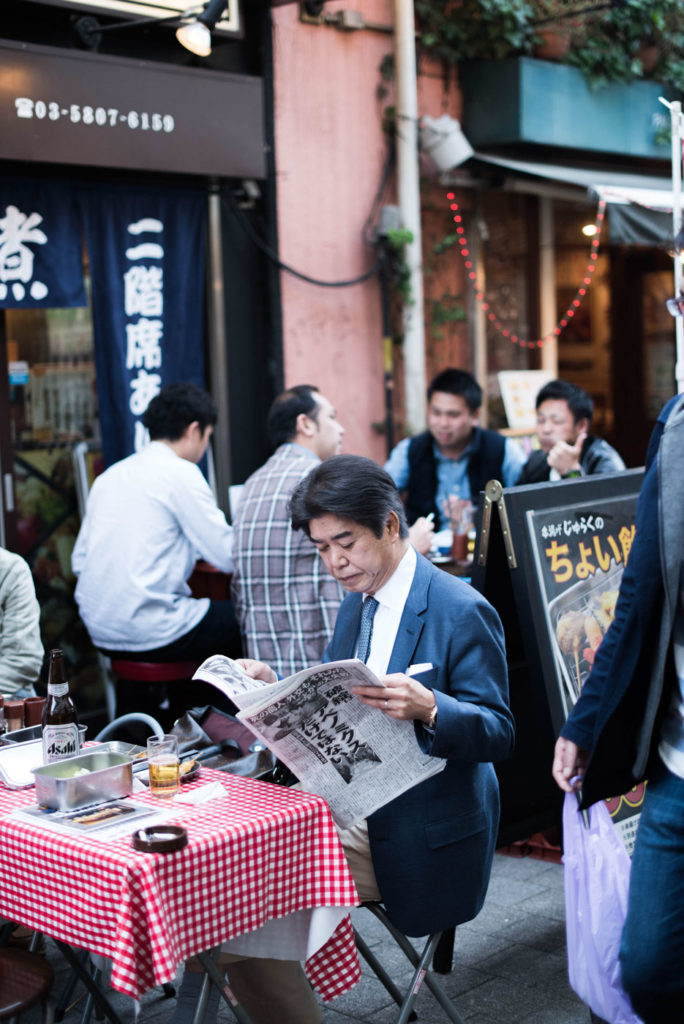

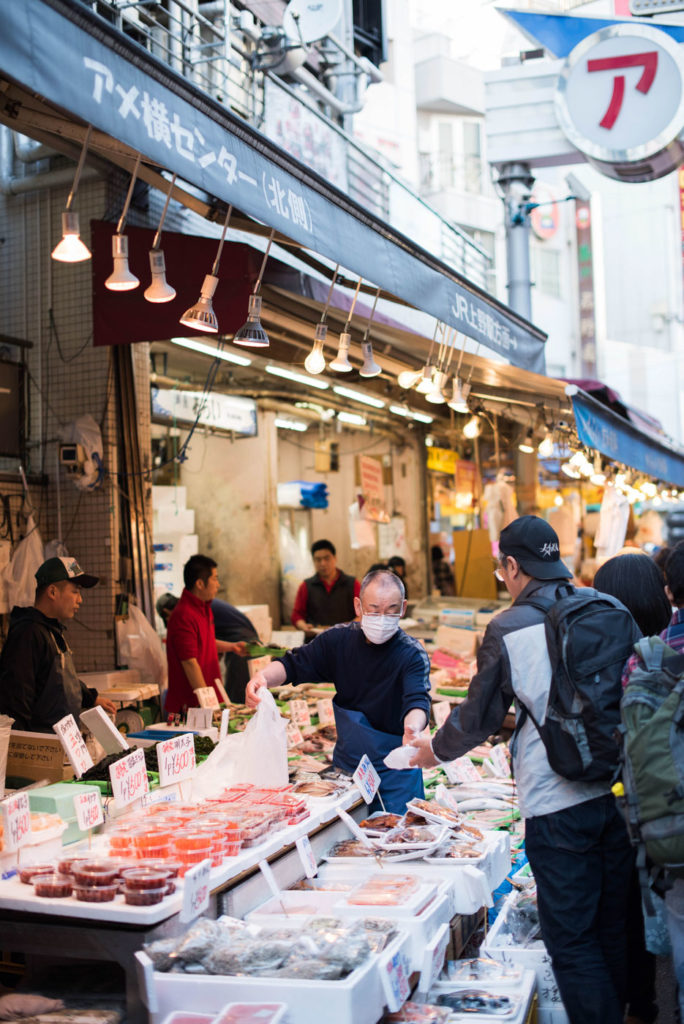
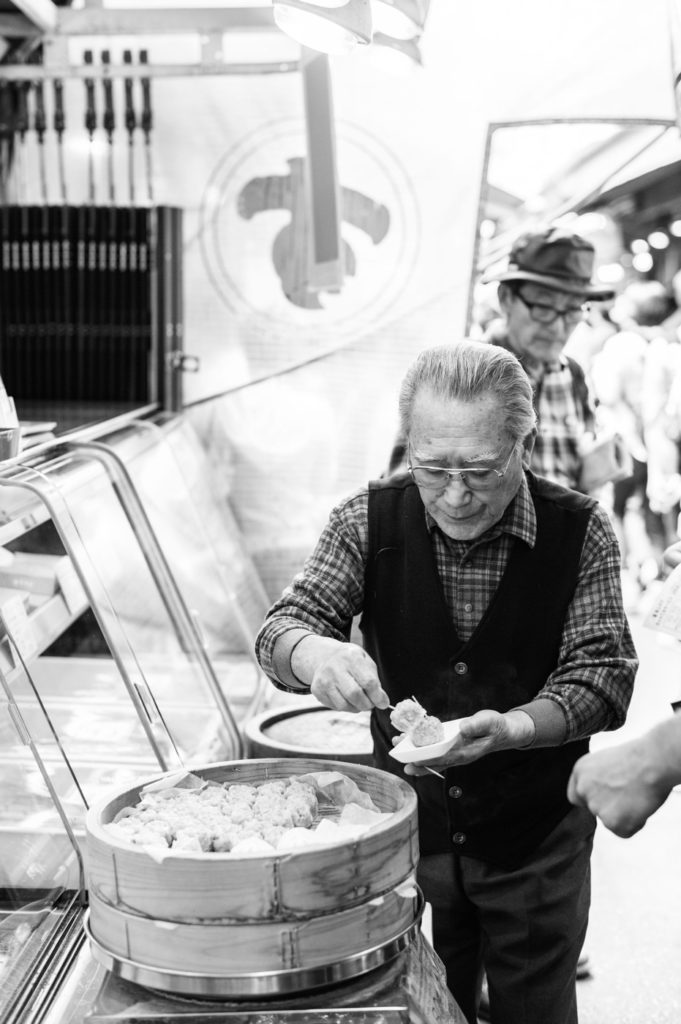
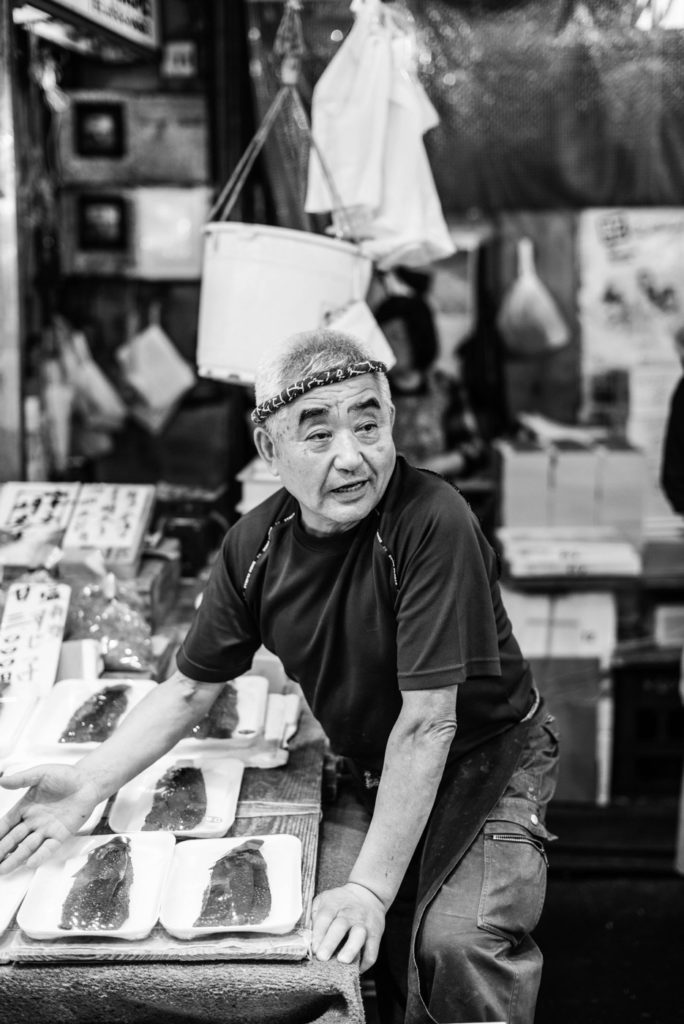
Tokyo infuses you with its high octane energy. There were many times on our trip where I would lie awake in the middle of the night with all of the colors and lights of the day still flickering behind my eyelids. I would listen out to the nocturnal sounds of the city—squawks of unknown birds, a clatter of voices returning from a club, the smooth hum of a bicycle wheel on the ground. I would force my eyes closed and attempt to switch off my thoughts. But they would always return. What will we do tomorrow? What will we see? What will we eat?
Tokyo has an endless tapestry of food to discover. It is a tapestry that keeps being unpicked, re-stitched and made more intricate by the day. From the highest quality fine dining (it is the city with the most Michelin-starred restaurants in the world) to hidden alleyways dedicated to yakatori (skewered chicken), food is treated with respect. Many of the city’s greatest food destinations focus on just one dish. Recipes are constantly honed, with flavors balanced, enhanced and stripped back time and time again in search of perfection. There is a level of obsession with ingredients—from pieces of cured fish so light and delicate their flavor is nothing but a whisper, to bold, crunchy hunks of meat doused in bitter sauces—that can not be found anywhere else. Which explains why traditional Japanese cuisine (washoku) recently joined UNESCO’s Intangible Cultural Heritage list.
The best way to eat in Tokyo is little and often. Nakamise is a long stretch leading up to the grand Senso-ji Buddhist temple in Asakusa. There, stalls sell traditional Japanese sweets (wagashi)—frosty mocha ice cream, jelly cubes, half moons of bean paste in creamy shades of green and orange. Cooks ladle chicken soup into bowls and stall owners serve brown paper bags of deep fried pork to queues of immaculate young women swathed in kimonos. Over at the open-air market of Ameya-Yokochō, dumpling-makers beat puffs of flour into the air as they roll out fresh dough, while locals fill every possible corner eating steaming bowls of ramen and soft shell crab. If you venture out of bed in the early hours, you can catch Tsukiji Fish Market at its most charged. At around 5 a.m., fishermen in yellow overalls zoom around on scooters beneath the sprawling vaulted marketplace. The floor is covered in melting ice and buckets of flipping eels, while bright red squid glisten beside piles of fat tuna and yellowtail. All of this can be tasted in the surrounding streets, where visitors queue up to eat the freshest sushi imaginable at tiny wood-paneled cafes. Behind blink-and-you’ll-miss-them entrances, Tokyo’s hidden alleyways (yokochos) house some of the city’s most exciting food. In the warren of Drunkard’s Alley, locals can be seen eating sushi and knocking back sake behind the slatted windows of its tiny, glowing bars. In Sanchoku Inshokugai you can sit on old beer crates and eat fresh salmon roe and sizzling crab as the trains of Yūrakuchō station hurtle across the rails overhead. Down the lantern-lit length of Piss Alley in Shinjuku, diners feast on everything from cold soba noodles and grilled lamb to frog sashimi, pig’s testicles and soft-shell turtle. At least, some do…
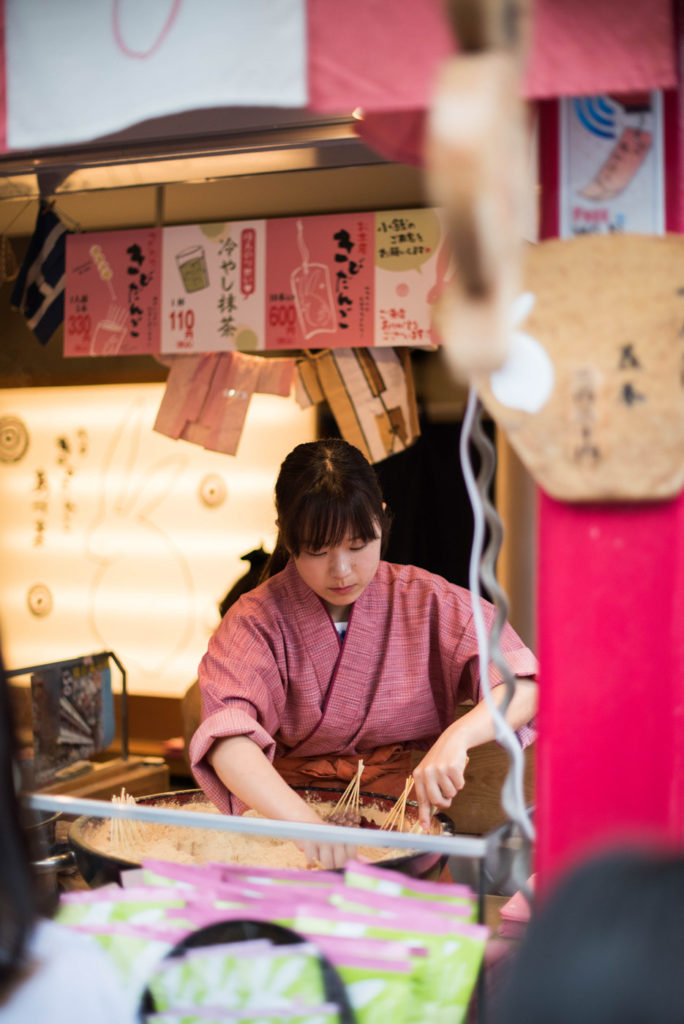
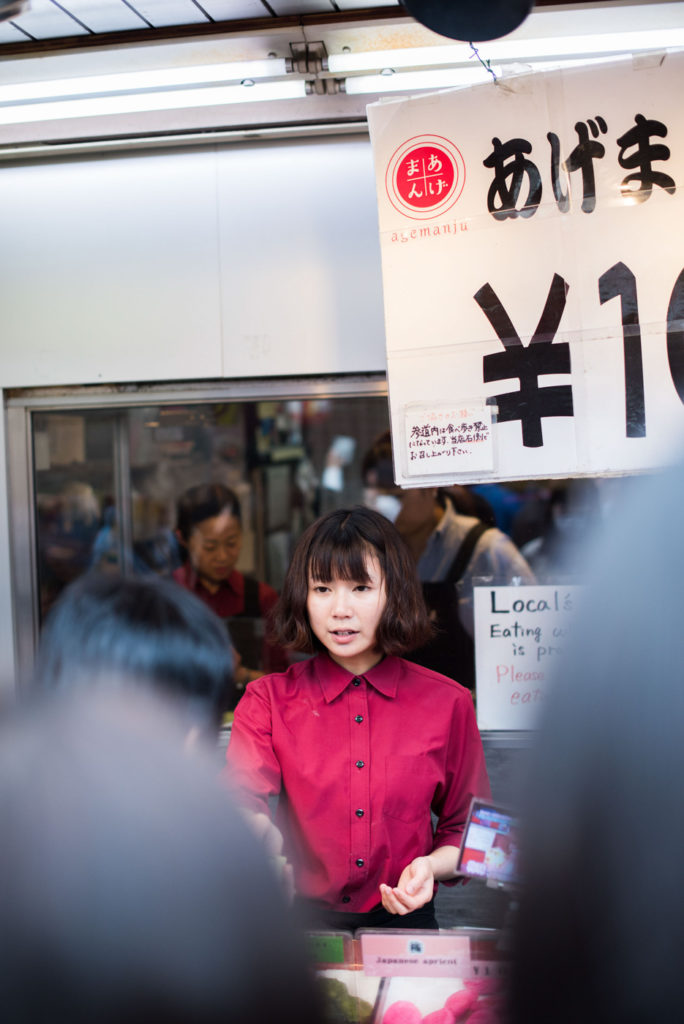

It is near impossible to wander down Tokyo’s streets, with their bubbling pots of broth, smoking skewers, tanks of thistly sea urchins and fresh dumplings without stopping for bite after bite. And it is even more impossible to devise any kind of comprehensive list of places to eat there. The food world is huge and ever changing, with craft coffee and cocktail bars popping up beside hole-in-the-wall ramen cafés and restaurants serving 10-course tasting menus. This enormous city has a multitude of personalities to match. It is both progressive and traditional, intoxicating and calming, orderly and chaotic. And for every facet of its personality, there is a dish to match. In our minds, Tokyo’s best food is to be found around hidden corners, in concealed alleyways or bustling marketplaces, in the early morning hours or late at night. In our short time there, these were the meals we loved most, sitting at makeshift tables while the world passed by in a flurry. Many of these places are unnamed, and are there to be discovered by chance. So rather than a guide, here is a little selection of cafés, bars and restaurants to enjoy along the way as you unearth the city’s culinary treasures for yourself.
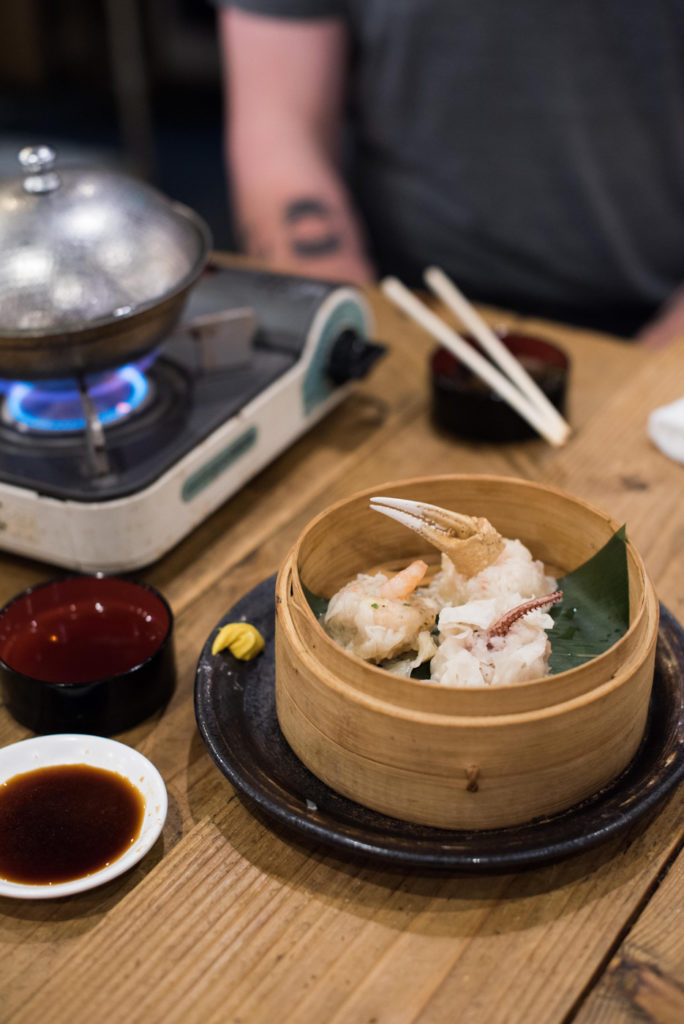
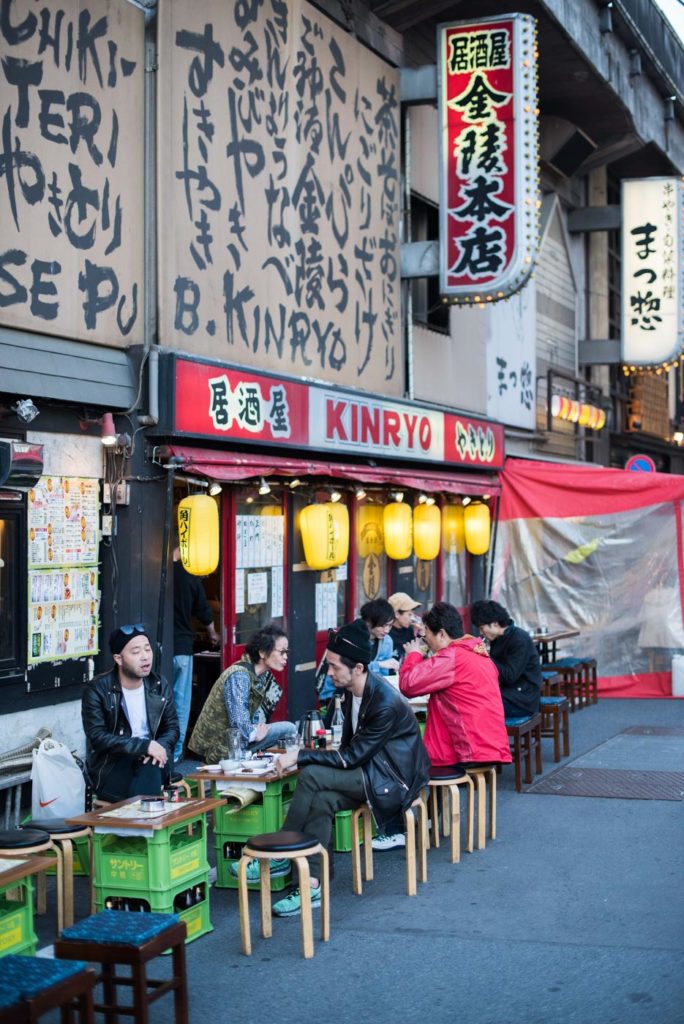
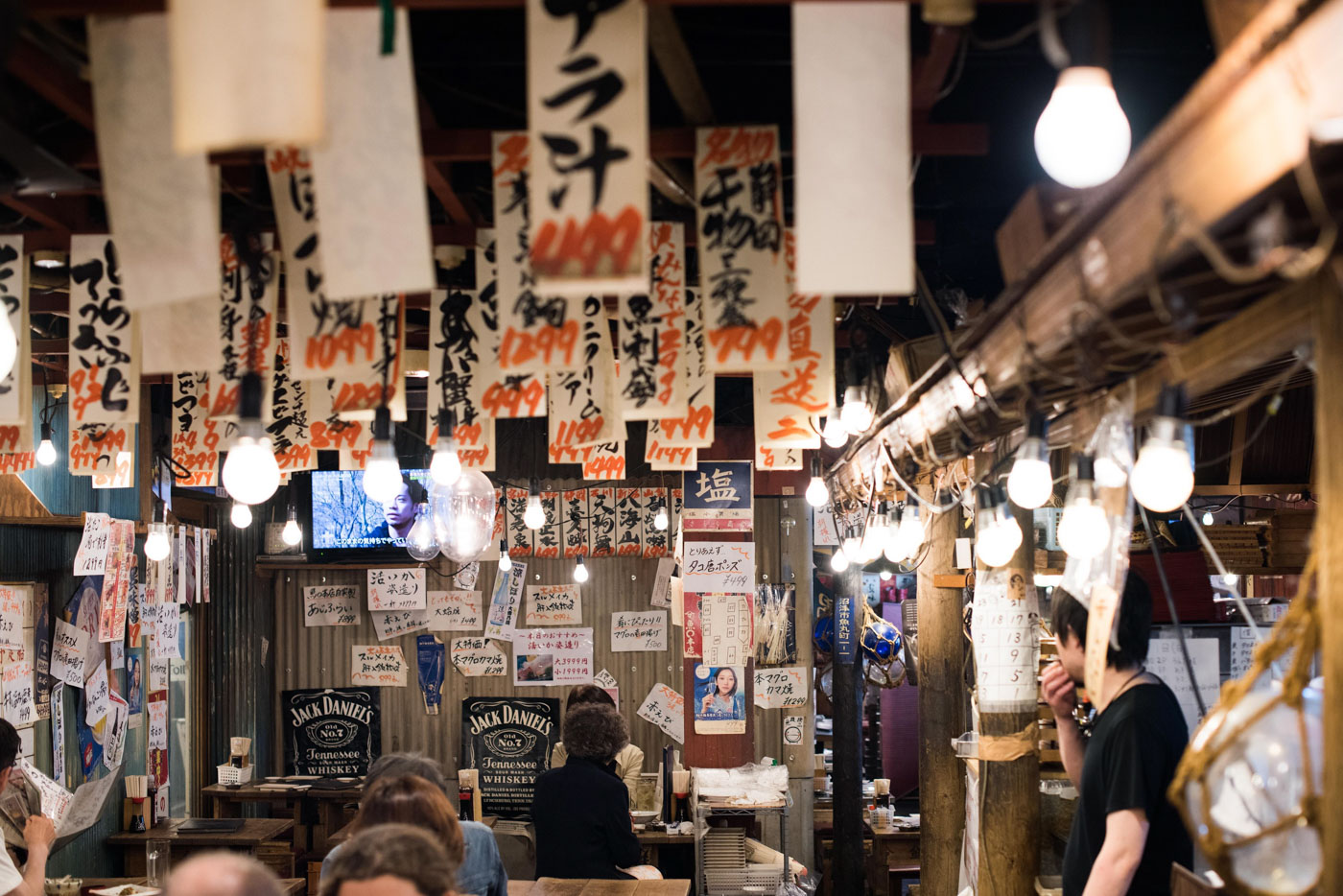
—
Fuglen
Mirroring the 1960s, Mad Men-esque charm of its original Oslo branch, this spot stands on a street corner not far from the manicured Yoyogi Park. Blending coffee, craft liquor and vintage furniture (for sale), Fuglen has captured the hearts of uber-hip locals with its soft straw wallpaper, dark wooden ceilings, and mid-century Norwegian furniture. The shop is run by Kenji Kojima, who serves scrupulous coffee by day. The aeropress—made using African beans roasted in Norway—is light and silky, with fruity bitterness. By night, Japanese and Norwegian craft beers sidle up next to artful cocktails on a menu that can—and probably will—keep you glued to the curved bar until closing time.
〒151-0063 Tokyo, Shibuya
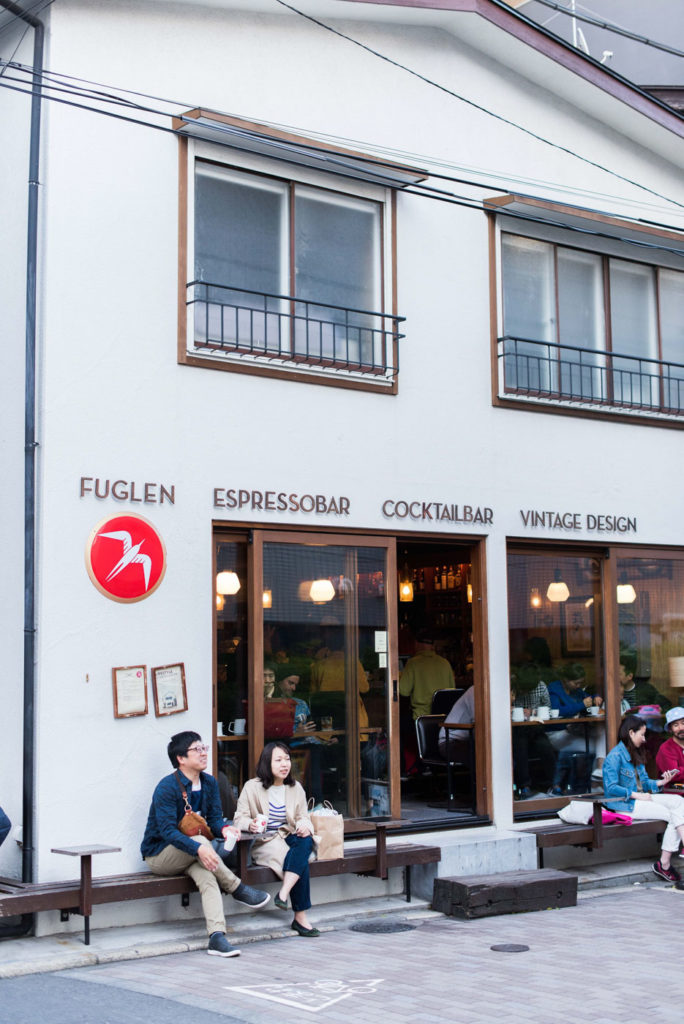
—
Harajuku Gyozaro
The first time we visited this celebrated gyoza bar, we were lucky. A new crab sandwich stall had open a few doors down, and hundreds of would-be punters had opted to stand in line for that instead. The next time we went, the long queues were back to normal. But by then we were madly in love and didn’t mind waiting. The open kitchen of this casual Harajuku eatery is the star of the room, with cooks clattering away in a cloud of steam. The bar wraps around them, with visitors munching on chunky cucumbers drizzled with miso paste, clear bowls of chicken soup, pickled cabbage and, of course, pork gyoza. The selection is simple—pan fried or boiled, garlic or chives, each one hot and salty, encased in silky, yielding wrappers. Regulars around the bar told us to order everything, which we did. On both visits.
6 Chome-2-4 Jingumae

—
Grandfather’s
Hidden inside the strip-lit halls of a non-descript block in Shibuya is this iconic bar, which has been serving locals for over 40 years. The small, dark room is lit by low-hanging lights and suffused with cigarette smoke. The elderly owner—who is almost certainly the coolest man on earth—stands behind the bar with a lifetime’s worth of records, spinning everything from Aretha Franklin, Cat Stevens and James Brown to Adele and James Blake. Bottles of whiskey fill the shelves, labeled with the names of clients who have bought one and left it for next time. We considered doing the same, but opted for glasses of cheap red wine instead. We sat in one of the booths and watched regulars sip hard liquor to the sounds of Joan Baez, smoking endless cigarettes as “Grandfather” carefully selected his next record. The atmosphere in there is heady and rich, and the nearby madness of Shibuya seems worlds away. It is the kind of bar people try to mimic, but like so much of Tokyo, is impossible to replicate.
B1F Flat Bldg, 1-24-7 Shibuya, Shibuya-ku, Tokyo
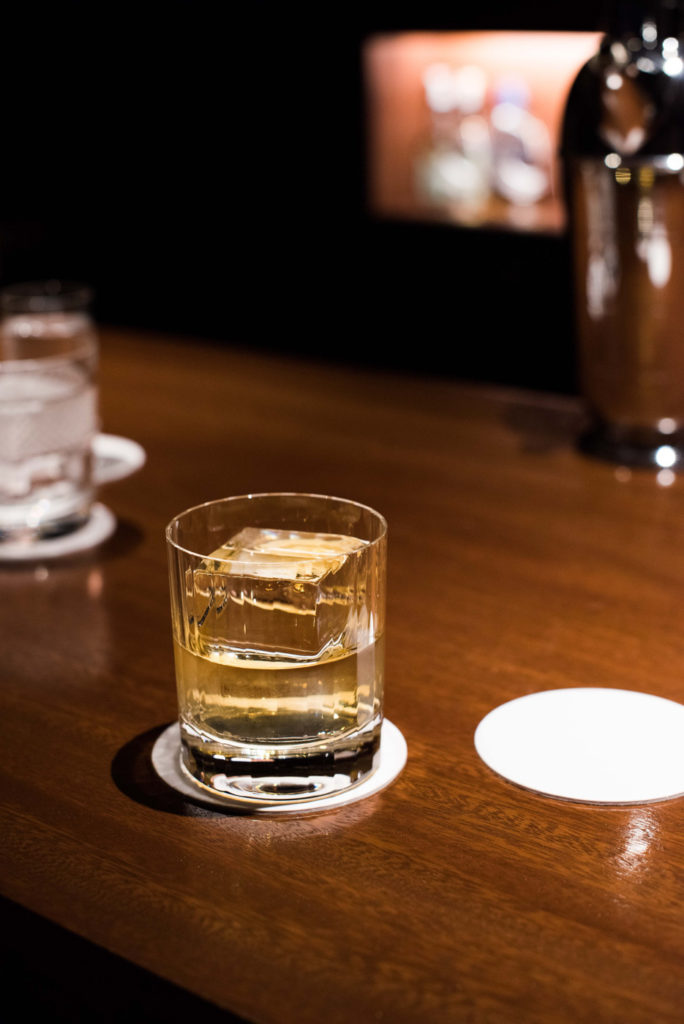

—
Afuri Harajuku
Afuri came to us like a vision on our first night in Tokyo, when jetlag threatened to send us sloping back to our room without dinner. From the quiet street where it lives, this small ramen bar glows. Cutting out the tiresome tradition of table service, guests simply punch their order into the ticket machine and take a seat. At least, it seemed simple to everyone but us, who accidently ordered three bowls of ramen with all of the trimmings. Which turned out to be a rather good decision. The ramen at Afuri is classically made, with a choice of salt or soy sauce broths accompanied by handmade noodles, egg, grilled pork, seaweed and egg. The soup is a blend of chicken, fish and seaweed with a zesty peel of citrus to garnish. The result is refreshing and light, with a subtle kick of heat. It was in front of our three bowls, watching locals loudly slurp up their noodles (it is the customary way to enjoy them, cooling the broth down as it enters the mouth), that we made the quiet but firm decision to eat ramen every day for the rest of the trip. We kept our promise, visiting two other branches of Afuri across the city in that time. The machines remained a mystery.
3 Chome-63-1 Sendagaya, Shibuya, Tokyo
—
Maruyama Kippei
The sign outside the door makes things pretty clear: “Please stand behind the yellow line. If you don’t like pork fat, you’re in the wrong place.” Maruyama Kippei specializes in tonkatsu, a traditional deep-fried pork cutlet coated in panko breadcrumbs. It is available all over the city, but it’s hard to imagine a more perfect one than this. The restaurant has enough room for only a few guests at a time, with one chef quietly at work behind the counter. Along with ice cold beers, we feasted on thick, succulent pork in a crunchy batter, served with a mountain of cold white cabbage and a jug of sweet, umami-rich sauce. We looked up from our plates to see the cook watching over us as we ate. We smiled, and he gave us a knowing nod. We were definitely in the right place.
5-20-8 Asakusabashi CS Tower 107 1F, Taito
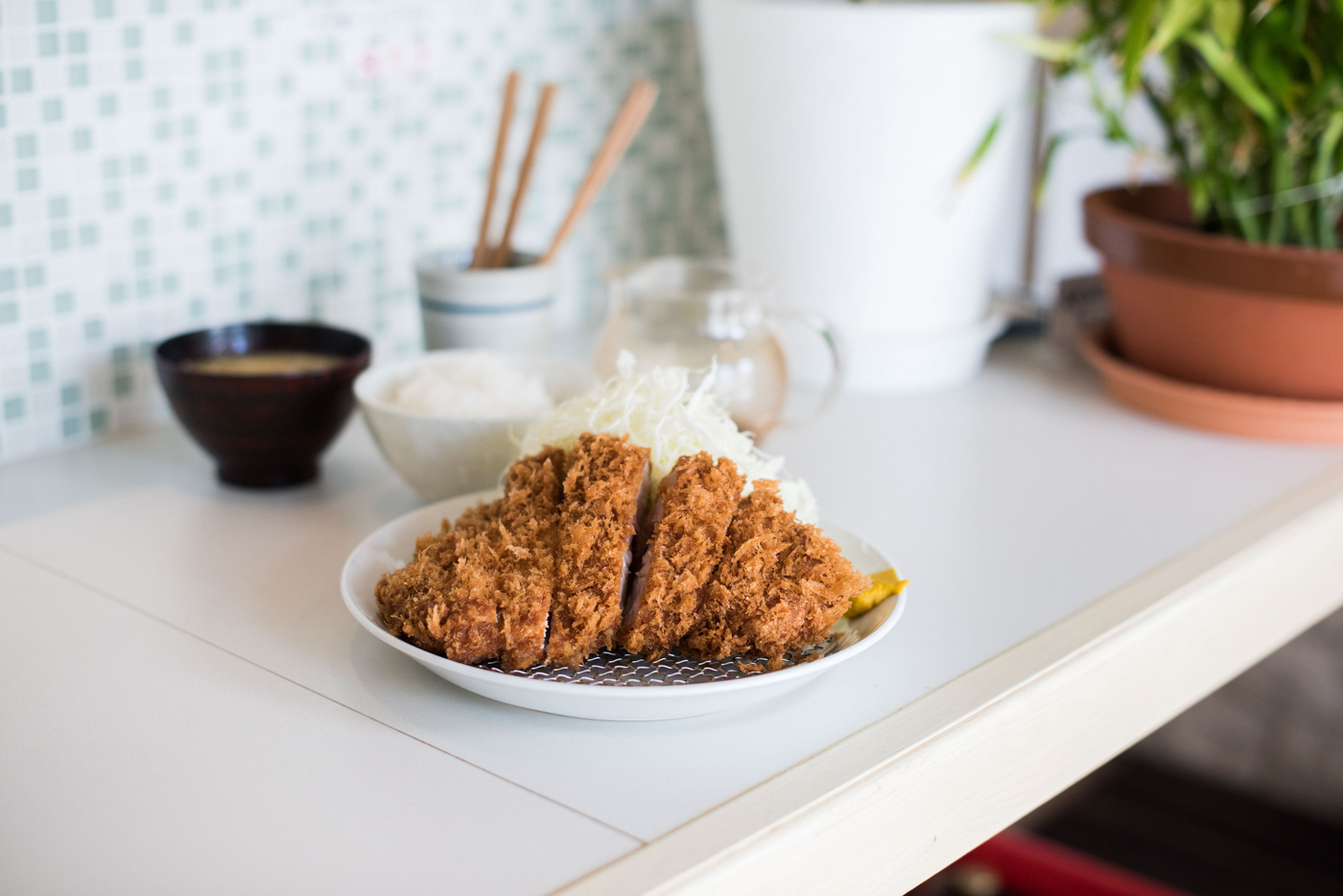
—
Number A
Located in the gridded streets of Omotesando, the teal floor-to-ceiling doors of this café are pushed open on sunny days, inviting visitors in to drink specialty coffee and enjoy lunches of soft pancakes, creamy pasta dishes and comforting soups. The great service, attention to detail and simple, satiating food in here is unmistakably Japanese, while the soft grey wood, concrete bar and sunny terrace gives it the appeal of a stylish Sydney coffee bar.
3-12-2, Kitaaoyama, Minato-ku, Tokyo
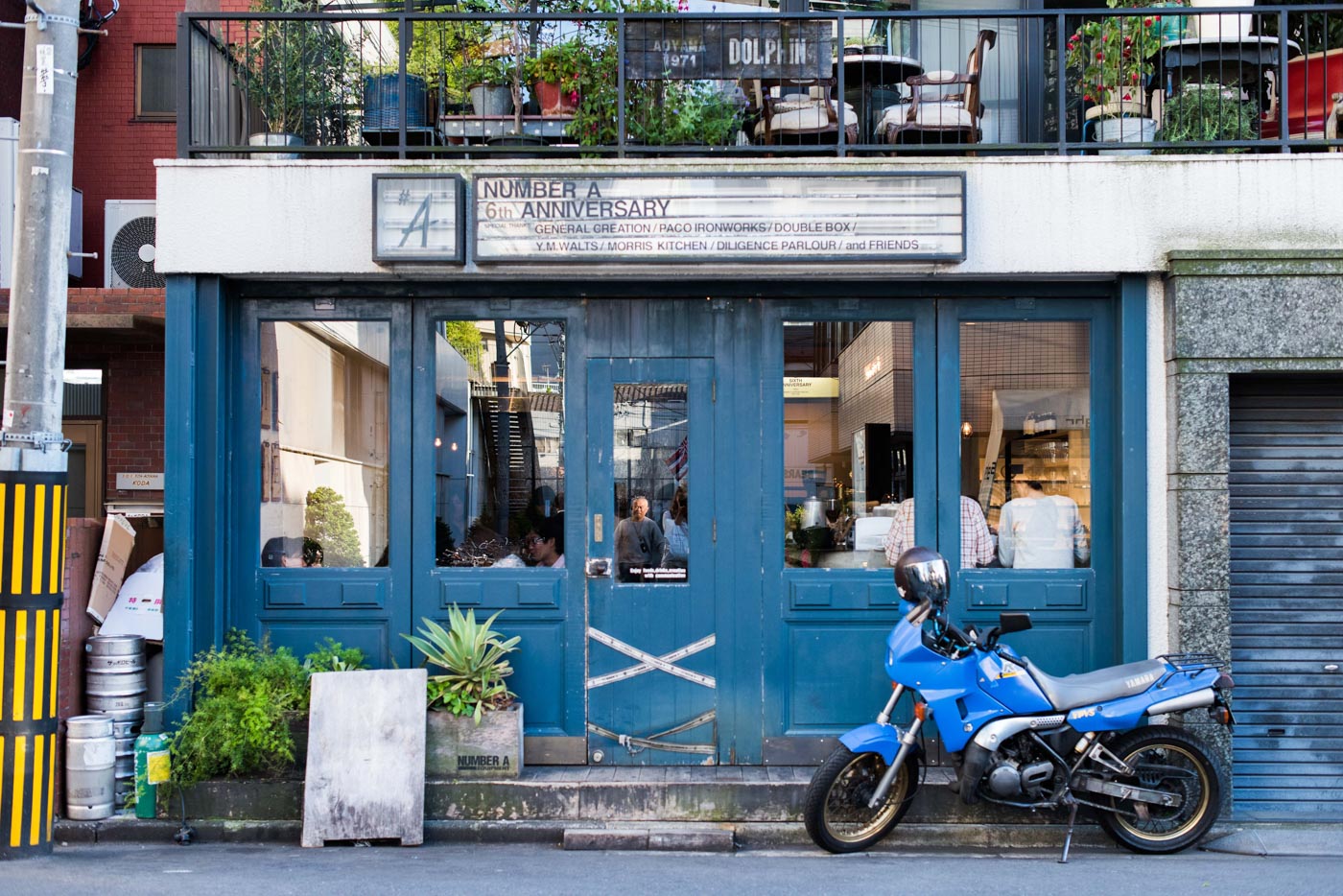
—
The Roastery by Nozy Coffee
Alongside the vintage shops, candy-striped diners and record stalls of Harajuku, some of Tokyo’s best baristas are at play. Occupying the ground floor of a red brick factory building, this single-origin coffee shop serves meticulous craft coffee with a daily-changing choice of beans from across the globe. In between strange bursts of rainfall, we sat outside on the wooden crates to watch the fashion pack of Cat Street traipse by in their sky-high platforms and fishnet sleeves.
〒150-0001 Tokyo, Shibuya
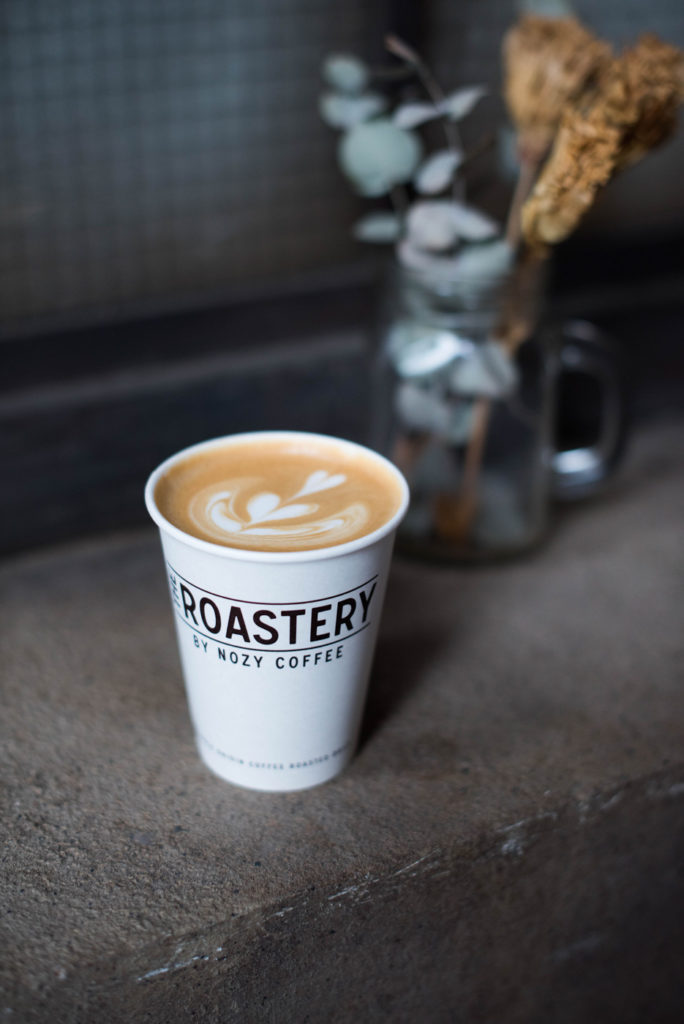
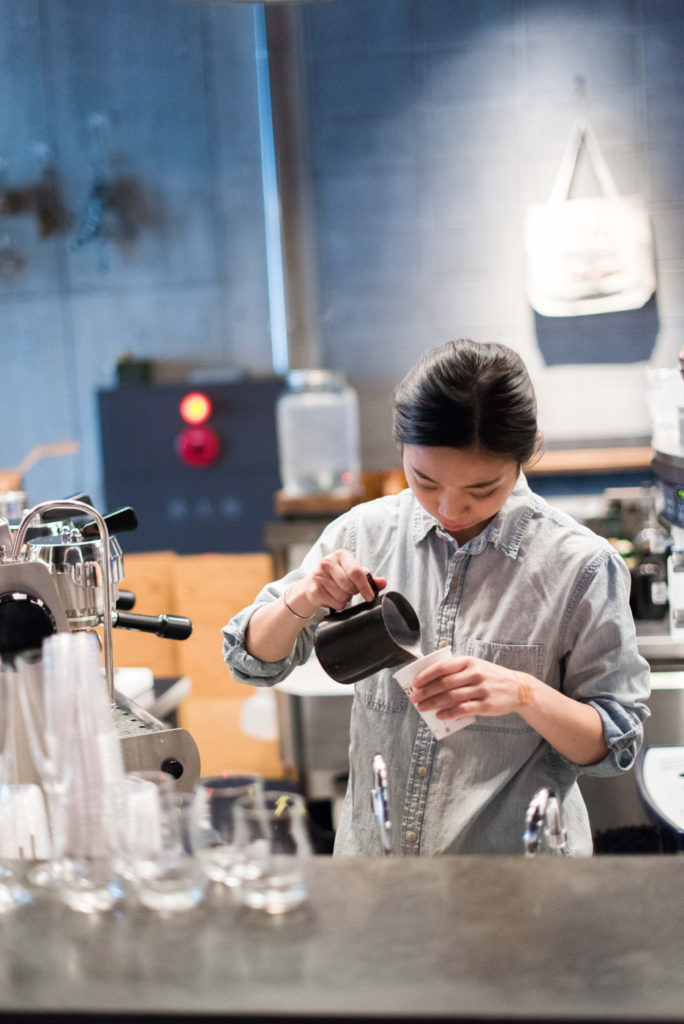
—
Bar Martha
The sister bar to Grandfather’s, Martha is a larger, contemporary version of the original, with an exterior that is just as concealed. The lighting is dim, the shelves of records are endless and the turntable is the heart of the room, piping out of a tall retro Tannoy speaker. A shelf of golden whiskey bottles stretches across the room, while guests sit at the bar snacking on free chocolate-covered rice and wasabi peas in jars. Ever the Brit Abroad, I cackled with laughter at one point, and was sternly told to quieten down by the bartender. Unlike in London, where the music is barely audible above the din of voices, bars like this in Tokyo require the attention of the guest to fall upon the music, creating a far more immersive and memorable experience. I kept my mouth shut and listened to the music for once, sipping amber colored whiskey poured over an immaculate cube of hand carved ice.
〒150-0013 Tokyo, Shibuya
—
Takamaru Sengyo No.3
Slotted between the tall buildings and crawling traffic of Shinjuku, this casual restaurant is spread across a couple of floors, serving the purest, most authentic Japanese food imaginable. Along with a frosty china bottle of sake, we ate sushi – thick, purple tuna, eel, octopus and creamy sea urchin – and fat oysters on ice and two bowls of cloudy miso soup. There is no English menu (thankfully), so we pointed to a few dishes on the surrounding tables, wrote down our budget on a napkin and let the waiter make the decision. Over in the corner, a group of friends sang happy birthday and blew out the candles on a cake. Squid and fish heads lie in crates of ice at the entrance, while staff in bandanas dip in and out of the kitchen beneath the linen noren curtains. The rooms are bright and packed with locals. The walls lined with photographs of Tsukiji Market (where they source their fish) and marine posters. It is open until late into the night, and is always the first thing that comes to mind when I think of Tokyo.
7-12-3 Nishishinjuku, 1F-2F Sato Bldg., Shinjuku
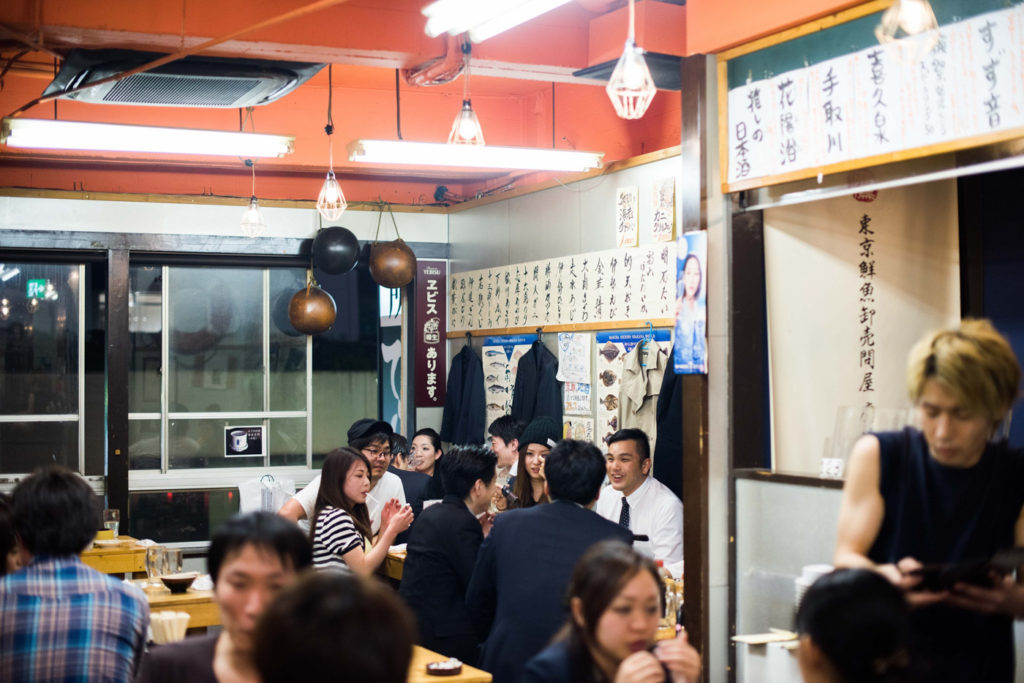
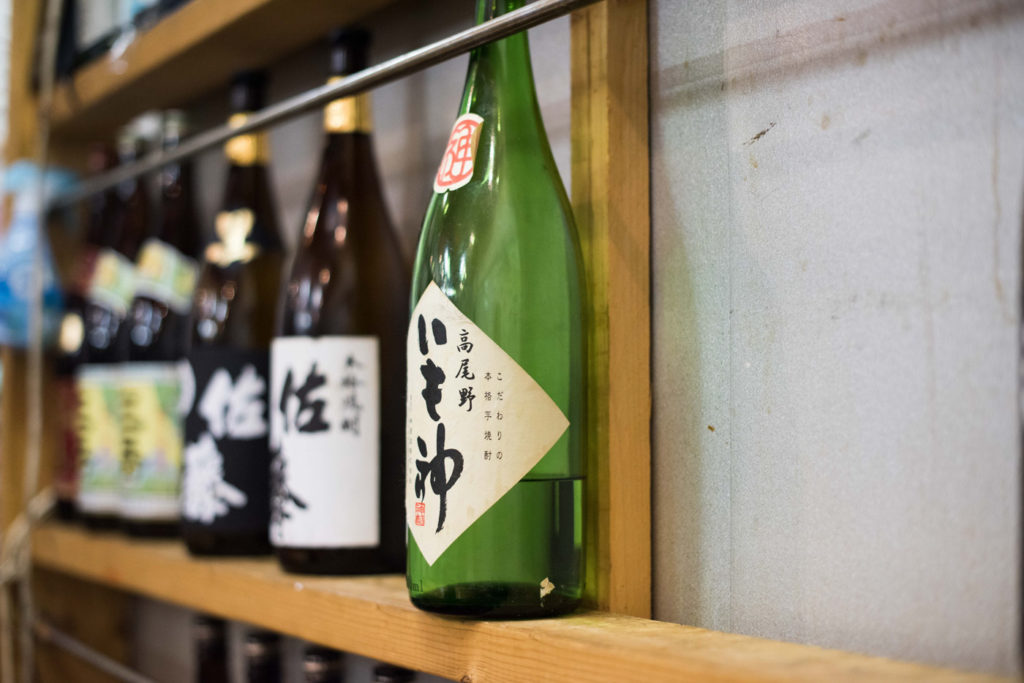





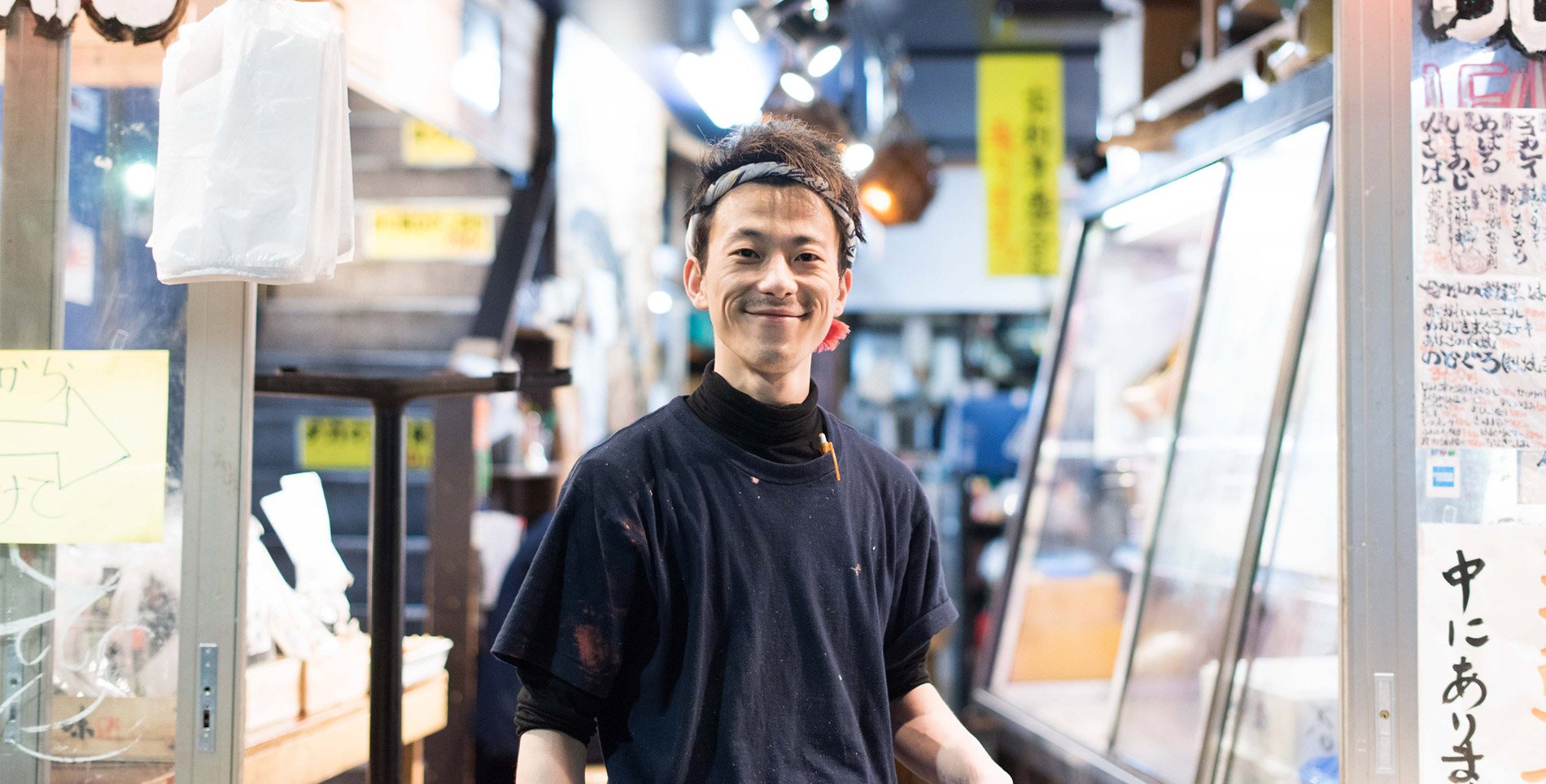

Our comments section is for members only.
Join today to gain exclusive access.